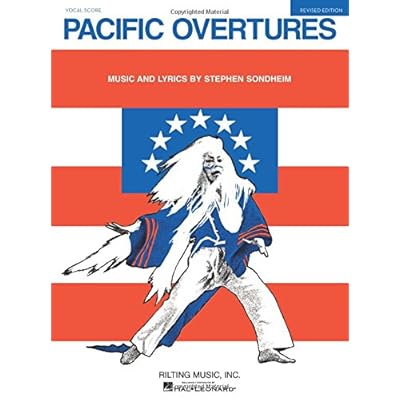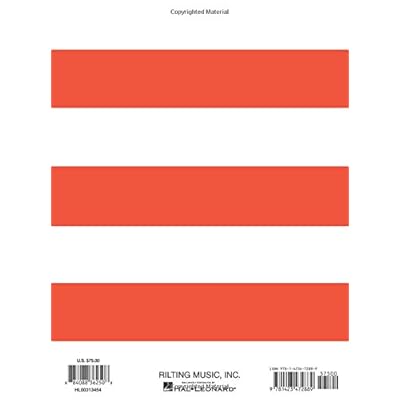Pacific Overtures: Revised Edition - Vocal Score
Category: Books,Arts & Photography,Music
Pacific Overtures: Revised Edition - Vocal Score Details
(Vocal Score). This edition has been prepared, following the wishes of Stephen Sondheim, from the final, revised composer's score.

Reviews
I've owned this vocal score since 1982 and purchased a second in 2015. There is virtually little difference between the two except for dialogue changes in the finale, "Next." It updates Japan's growth and achievements between the 1976 production and the 2003 production. The changes are the spoken lines between the company's 2 measure interjections of "Next!" and a few spoken cues. The “Lion Dance” is modified by the difference is negligible. That said, this price is $20 cheaper than what I paid in 1982. No one would argue that "Pacific Overtures" is Sondheim's most intricate and difficult to read and play score. It is the last of his scores prepared from orchestrations rather than Mr. Sondheim's piano score, it includes instrument cues, 3 to 4 staves with which a gifted pianist can re-create the orchestration on a piano but choices of what must be omitted occur in a number of places. Regardless, "Sweeney Todd" aside, this is Sondheim's most impressive musical, starting with very traditional Japanese music and fusing Western music (and instruments) as the 170 years pass. Aside from the last 90 seconds the entire score is written Kabuki astyle, all men. There is great humor (“Welcome To Kanagawa", "Please Hello") and some heart breaking pieces, ("Pretty Lady" and "Bowler Hat"). One song sung by two men walking a great distance who trade Haiku is a brilliant piece called "Poems". "Chrysanthemum Tea" is a remarkable song with no place to breath through which the Shogun is murdered. "Is There No Other Way" is a stirring duet that utilizes the Shamisen and muted strings. Jonathan Tunicks Orchestrations are at his best. The pages are glued, not sewn and fast page turns may cause pages to come free. (Why I bought a second copy.) I had a wonderful time with this at the piano and many student workshops, but producing this musical is both expensive and difficult as it requires 27 Asian men who can sing, act, and move. Additionally, 13 women must be on salary to appear at the literal end after the lyric, "More Surprises: Next!" Legitimate Japanese instruments are not easily duplicated by synthesizer. Additionally, this is not a toe-tapping, humming show for spacing out and drooling: it’s a show where the meaning and metaphor outweigh the plot. John Weidman wrote the book for this masterpiece- and with all of Sondheim’s book writers, gets a fraction of the credit he deserves. (Sondheim is the first to admit this.) In 1990, Weidman and Sondheim wrote "Assassins" a character piece based on American political assassinations. The style of music and book are light years away from “Pacific Overtures.” Sondheim and Weidman joined together again to write a show about Addison and Wilson Mizner, which began as "Wise Guys" became "Gold" then "Bounce" (Goodman Theatre, Chicago) then finally parred down to "Road Show" on Broadway." The critics and public call these Weidman-Sondheim shows a trilogy, but in no way was this intended nor is this true. Most of Sondheim's musicals are definately American. Not just these three. Purchase the cast recording as well as the score because the two combined will teach you more about music theory than three years of undergraduate work at Curtis or Berklee. It's true that I'm a Sondheim "expert" both regarding live theatre and in the classroom. If you're impressed by Sondheim this is by far his most impressive score. “Pacific Overtures” first played at The Winter Garden in the 1976 season and where "A Chorus Line" swept the Tony Awards, “Pacific Overtures" had nine nominations but Boris Anderson was the only winner for best scenic design.



